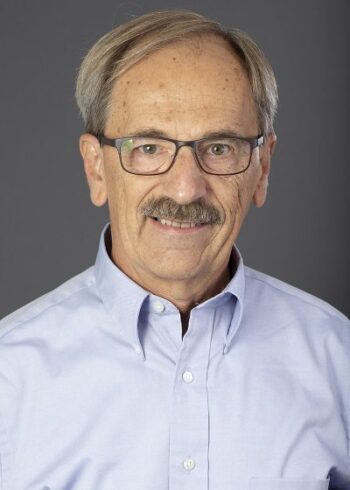From the Editor: Three Stories From My Personal ‘Infrastructure News Network’

This August 2023 column highlights three infrastructure topics I find interesting on personal and professional levels.
Headline News: The Bridge Collapse
There have been many articles written about the bridge on I-95 in Philadelphia, where a tanker truck turned over and the resulting fire caused the bridge to collapse. The heat from the fire caused the steel beams to fail, and the structure’s closure resulted in miles of backup and hours of delays for the motoring public. I’m sure it was a massive inconvenience for thousands of people trying to get to work or shopping or back home.
I’ve frequently been stuck in traffic jams due to accidents—the delays were especially long when I used to live in Chicago—but the roadway in Philadelphia was open to traffic in less than two weeks, beating the schedule estimate. Words such as “remarkably quick opening” and “speedy reopening” described the temporary solution.
Remarkable and speedy, yes, but let’s not forget that a person died. Nathaniel Moody, a 53-year-old husband, father and experienced driver, lost his life in this tragedy. We may never know the cause of the accident, but we do know that his family and friends will miss him deeply. As I sit frustrated in traffic jams, I try to keep in perspective my typically unimportant delays caused by the backup compared to the loss people actually involved in accidents endure.
Human Interest: Drive-Thru Congestion
I recently read an article about drive-thrus (apparently that’s how it’s written) and the effects they have on traffic. I did a little “research” (meaning I googled it) and found there are more than 200,000 drive-thrus in the United States with more than 6 billion visits per year. Certainly, it’s convenient to sit in your car and order something to eat, and the businesses report that 70 percent of their sales are from these drive-thrus. The article points out the obvious: these drive-thrus concentrate traffic and cause delays and accidents, many involving pedestrians and bicyclists.
My personal experience is the effect of drive-thrus in a particular part of my hometown. There’s a roundabout on the east side of town where the main street intersects with a major north-south street and is located about a quarter mile from a state road interchange—it’s often busy. The south leg provides access to two large (for our town) shopping centers. There has always been a significant amount of traffic, and the well-designed roundabout reduced accidents and moves vehicles through efficiently.
Then there was a new lot being cleared, and rumors began to spread that a well-known “drive-thru” restaurant was coming. I didn’t think the city would approve a traffic-inducing permit so close to the roundabout; I was wrong. Now the two-lane drive-thru often backs up into the parking lots of the other stores and overloads the intersection just south of the roundabout. And, of course, people complain that the roundabout causes the delays. In our case, it was short-sighted to allow this traffic generator to happen without some redesign.
Across the nation, communities trying to encourage pedestrian and bicycle traffic as well as a neighborhood environment in their master plans stopped allowing drive-thrus, which encourage a stop-and-go customer—not one who will tend to visit other facilities in the immediate area. Certainly drive-thru “restaurants” have their place, but not where they cause traffic and safety issues or interfere with neighborhood plans.
Personal Interest: EV Charging Stations
The Nation Electric Vehicle Infrastructure (NEVI) program created by passage of the 2021 Bipartisan Infrastructure Law continues to move forward with the approval of plans for all 50 states and Puerto Rico for installing charging stations. This opens the funding to develop the network.
I’m interested because I often travel from northwest Indiana to Indianapolis, and, although it’s convenient, I’m looking forward to another option or two beyond the fast-charger located in the Walmart parking lot in West Lafayette, Ind. As often as we have stopped here, even the short period of 20-25 minutes walking through the same store gets boring. Just recently, Indiana held a NEVI Stakeholders Meeting and a Pre-Proposal Webinar. I assume most other states are in a similar mode.
Perhaps some alternative refueling options soon will become available, and I’ll meet new EV people at different locations.
About Robert Schickel
Robert Schickel was born in New Jersey and received his BS in Civil Engineering degree in 1971 from Valparaiso University in Indiana. His career started as a bridge design engineer and expanded to include design of various transportation facilities, including highways, bridges, rail lines and stations, and airport runways. Mr. Schickel managed engineering offices ranging from 20 to 140 people. He also served as a consultant to a large utility company. Mr. Schickel currently resides in Indiana and serves as Adjunct Professor for the College of Engineering at Valparaiso University. He enjoys his retired life at his lake house, playing golf, listening to music and spending time with his family, especially his grandchildren.


